Waiting for tomorrow night's live with Antonio Bonifacio, dedicated to his book The Dogons. Masks and souls to the stars (Venexia 2015), we host this vast unpublished work by the author which summarizes the religious cosmology of the peoples of western Sudan and its links with ancient Egypt.
di Antonio Bonifacio
…the next Sigui will be in 2028 or never.
Jean Rouch
September 29: “Cool night in Bandiagara. Departure. Bogged down for almost an hour. Arrival in Sanga. Chief Dounèyron Dolo welcomes us cordially. Other people come and many children too. Here we are far from the servility of most of the men we have met thus far. All those known Negroes and whites make the impression of scoundrels, villains, lugubrious jokers, compared with these people. Extraordinary religiosity. The sacred is present everywhere. Everything seems wise and grave… Classic image of Asia.”
Michel Leiris, Fantome Africa

Premise
The "discovery" of the Dogon in Europe coincided above all with the dissemination of the results of the Dakar-Djibouti mission (from the Atlantic Ocean to the Red Sea), an ethnographic expedition which landed in Africa in 1931, to end its journey in the French colonial territories in 1937, sending a substantial documentation to the mother country. It had been preceded by a practically "solo" mission by Commander Louis Desplagnes, which took place in the two-year period 1904-1905, having as its object of study the Nigerian plateau and therefore exactly the Dogon territory. Desplagnes's was the first incisive encounter with an ancient population, probably nomadic at first, then sedentary, which yielded a remarkable collection of ethnographic observations, recently re-evaluated. To this was associated a small patrimony of regularly acquired finds, which Desplagnes, on his initiative, brought with him on his return to France. The solitary adventure of the French soldier enriches the knowledge of places and people thanks to a large number of beautiful drawings and valuable photographs, only recently found, as well as the volume he wrote The Central Nigerian Plateau: an archaeological and ethnographic mission in the South, fundamental at the time for the knowledge of places and people.
The next expedition, led by Marcel Griaule, took place over 25 years after this one, with the Western world completely changed, in means and mentality, since the time of Desplagnes. It had a completely different purpose, in addition to the parallel one of carrying out a thorough ethnological investigation. This time the research was openly multidisciplinary, conducted by six prominent scholars, in their respective specialties, an economically demanding mission and for this reason jointly financed and which substantiated its activity in the finding of local objects suitable for being presented to an evident public hungry for exoticism and of "negritude". In fact, it was a question of collecting evidence of native craftsmanship obtained also, if not above all, with very questionable means and this with the aim of enriching the bare rooms of the Trocadero Museum which, singularly, languished in abandonment, despite being in the midst of the explosion of enthusiasm of expansionist France which celebrated itself in Paris with the usual grandeur from beyond the Alps in theUniversal Colonial Expo of 1931, therefore coinciding with the departure of the Griaule team.
It is also possible that the ethnologist's meeting with the Dogon happened by fate, as it is doubtful that there was any intention of visiting that people, as this population was considered hostile and of rough character, considered among the most backward of that territory sub-Sahelian which today is a conspicuous part of Mali. However, apart from this, the mission had to stop in the Bandiagara cliffs roughly from 25 September to 30 November 1931, changing many things in the conception that one had of the native African populations and also changing the life and thought of many participants in the enterprise.

Griaule was progressively struck by the richness of Dogon knowledge and by the complexity of the traditions he had found in those very remote places, so much so that the study of this people gradually began to occupy his life and became exclusive in the following mission in 1946, in which Germaine Dieterlen will participate , his indefatigable companion, who will continue his work in an ideal passing of the baton after the premature death of his colleague exactly a decade later. In any case, the turning point came after 17 years of intense visits to the places; the couple was given, in all its depth, the hermeneutics of the Dogon myth of creation, this time referring to an anagogical level, so to speak (to allude to Dante's interpretation of the Comedy).
It's about that origin story from which it will spring first God of water (responsible, like Sad tropics by Claude Levi-Strauss, of many anthropological and…tourist vocations) and then, with the procrastination of research, with the stupendous file of The renard pale (the Pale Fox, an original mythical entity born from the excised earth or created by the unique god Amma depending on the mythical versions) which was supposed to be prodromal to an even more extensive study, all carried out in this way.


At the conclusion of this very brief introduction, we would like to point out that the subject that will be exposed would allow, more or less, possible easy sensationalisms, however we anticipate that we will face what is exposed with the most scientific rigor possible, affirming, at the same time, that the purpose of the writing is to show, albeit necessarily for hints, the deep ties that the Dogon culture has not only with the neighboring Sudanese peoples, not only with archaic Egypt, but with what someone has decided to define Original tradition of humanity, i.e. a pattern of symbols that appears irreducible to any historicization (this aspect which constitutes virtually an unprecedented study of this population).
This is by no means just a personal inclination. In the first appendix of the epochal essay the Mill of Hamlet de Santillana and von Dechend address a small and affectionate pat to Germaine Dieterlen in relation to the order of ideas that the researcher had formed around Sudanese astronomy, and the rebuke was expressed in these words: "Needless to say, we don't need to share the author's opinion that the Mandingos have invented their own systems of astronomy”. It is to be believed that the delicate reference comes directly from the pen of de Santillana, the last pupil of Leo Frobenius, the researcher who had placed Atlantis in Africa, and of Charles François Dupuis, author of the fundamental essay the Origin of all cults, who saw archaic astronomy as the key to understanding the origin of the religious sensibility of peoples starting from an original root of archaic depth.
Sirius (the dog star, leader of the Planets) in antiquity
Sirius was conceived and "experienced" by our arcane ancestors as the permanent center of the archaic universe, according to the title of the conspicuous article by de Santillana and Von Dechend, a cosmological theme then amply taken up in the following essay the Mill of Hamlet. It has been defined as a "permanent center" because the star appeared to the eyes of our archaic ancestors as a millennial fixed point in the sidereal motion of the celestial bodies, which, translated into scientific terms, means that the star, due to its proper motion , appeared free from the millenary movements due to the precessional rotation.
We leave out here the theme of the periodic reddening of Sirius, transmitted to us by ancient sources (Ptolemy inAlmagest described Sirius as a red star, as it is described in the astronomical annotations of ancient China) and preserved in Dogon ritualistics, which will be mentioned later, we observe that this momentary "disappearance" of Sirius was not considered a mere observational singularity, but rather a true and proper end of an era, as can be seen from the famous Plutarch's declaration relating to the silence of the oracles which evidently alluded to the impossibility of hearing the “Voice of the gods” again due to the katabasic twisting of the ages. The Egyptian civilization with which the Dogon has great connections fixed the basis of its divine stability in the Sotian calendar.
The authors of the Mill of Hamlet stating: "Throughout the three thousand year history of ancient Egypt Sirius rose every 4 years on July 20 of the calendar: in other words it was not influenced by the precession, which must have led to the belief that Sirius was much more than one of the many fixed stars. So when Sirius fell, the great great of Pan died” (p. 342). This gives account and reason for Giordano Bruno's intuition for whom Egyptian philosophy, in its ancestral radicalism, is nothing more than "astronomy".
The catastrophic consequence of the failed rendezvous of the Sun with Sirius is made to correspond to the "death" of the god Pan, and this was interpreted almost as if the event marked the end of paganism. A lucid commentary on Pio Filippani Ronconi's theme can be extremely illuminating, as it combines the physical and metaphysical aspects of the circumstance with these words: "In summary, apart from the Bon-po church, which has absorbed the fundamental criteria of its opponent Buddhism and has therefore organized and systematized itself, Shamanism presents the image of an extremely archaic knowledge, proper to a very remote culture, now crepuscular , precisely because the human type that sustained it has rarefied, for which access to different spiritual conditions was still natural, in which today's man - seated on an abstract experience of reality - loses consciousness. It is a cultural phase for which nineteen centuries ago Plutarch of Chaeronea ascertained the death of the great Pan” (Pio Filippani Ronconi. The multiple states of consciousness in Yoga and shamanism, Symmetry magazine n. 3, 2002).
At the astral change, also according to the principal thesis evoliana, expressed in revolt against the modern worldwould in fact correspond to a change of spiritual perception of humanity in an involutionary sense. As you can see there is a perfect assonance of ideas.

The Dogon myth and the Sigui ritual
(snake biting its own tail)
The Dogon myth, whose narration is incompressible in a few pages, tells of the fall of the cosmos due to original contamination (hence the "singular" theodicy that derives from it), of the invention of death and of the delivery of the "word" to men, the word is the main tool of Dogon symbology and root of that knowledge that the Primordials transmitted to their heirs, all this in the unfolding of mythical events, oscillating between "fall" and "remedy" to the same fall. It is in fact the articulation of three "words", chronologically successive, each with a specific domain of sacredness, as well as the renewal of the entire Dogon society through an essential rite, the irrepressible basis of the identity of the ethnic group.
The Sigui is the maximal rite which celebrates the invention of death and the giving of the "Word" to men and which periodically tends to restore the cosmos in its condition of initial perfection. The rite is celebrated every sixty years in an itinerant form, starting from the place where it all began, or from the place where the first blacksmith's anvil fell, i.e. the village Yougou Dougurou . This "village" is made up of three distinct agglomerations and is a place of "many shrines and little water”. It is from here that the celebration begins which unfolds in hierophanic locations throughout the territory, covering the entire country in seven years.
Thanks to the happy presence of the man who is considered the inventor of the ethnographic documentary, namely Jean Rouch, who happened to be working in another nearby area of Africa at that time, we had the opportunity to film the entire sigui. Rouch stayed in the places, together with Dieterlen, for the seven years (from 1967 to 1973) required by the need to complete a complete investigation. Of this activity of filmmaker has left a very precious testimony as the content of the documentary coincides exactly with the ceremony that Marcel Griaule accurately described in Dogon masques (1938 edition) rebuilt in based on testimonials from local participants at the sigui de 1910. As Rouch recounts, in an article entitled Le renard fou and la maitre pale, the happy circumstance of the filming could only materialize due to the combination of very fortunate, not to say providential, circumstances. The Dieterlen, in fact, after an extensive and very tiring negotiation with the state and local authorities, was admitted to the ritual, thus doing her an exceptional honor, as Yasigine (the woman wearing the mask satimbe, the only privileged female presence in the society of masks awa). Consequently, exceptionally, the whole ceremony could be observed and filmed providing an invaluable document to scholars. Rouch writes:
"...and since that day we have never stopped following Sigui. During the seven years since Yougo we did not go on the winding path to Tyougu, Bongo, Sangha, Amani, Iameye finally to the shelter of Songo following the Sigui on the 'wings of the wind'... "
The other very relevant circumstance to underline is this passage, the contents of which are suggested by Ambibé Babadyi, informant of the famous and multifaceted Michel Leiris, who writes:
"...the time of the celebration of each new sigui will be marked every sixty years by the eastward ascent of a celestial sign red observable from Yougo Dogorou village considered as the place of origin of the institution of the Awa or the place where the Dogon acquired the first masks (they therefore would not have been part of their culture before a certain date ed). Now Ambiné Babadyi indicates in a non-Dogon locality (…) where (…) the apparition of this sign takes place, adding that the itinerant rite of Sigui unfolds from this region to that of Yougo before making its normal journey through the dogon country. "
(Leiris 1948, p. 37)
In the interview Homage to Jean Rouch the filmmaker, indeed, the master of ethnological documentary, he introduced the possible meaning of the different rites performed in the peregrination of the ceremony throughout the country, as they are different for each location visited annually, even if teleologically addressed. In the circumstance, since we are in possession of this rare paper document (the film is in any case visible on Youtube), we can take advantage of it to condense, in turn, the essential aspects of this founding ancestral rite, because it is a unique, precious and probably unrepeatable of this event, since, given the current political-religious conditions, it is highly unlikely that the next Sigui, scheduled for 2027, can be celebrated, with all that the missed appointment entails.
The documentary film entitled Dogon Synthesis is composed in a single film resulting from the union of the local rites (different from each other) that accompany this authentic pilgrimage, which we could compare, by suggestion, to the Christian rites of the Passion, Crucifixion and Resurrection because, roughly juxtaposing the two events, the one historical, at least for believers, the other mythical, or mytho-historical for the Dogon, we nevertheless perceive the presence of a pattern common.
The stages of sigui filmed by Rouch is articulated for specific places of celebration related to the myth in the following way:
L'enclume du Yougo. Initiation rites, performed in public squares, by the Dogon dressed in ritual costumes. The dance they perform in honor of the ancient fathers is called "la danse du serpent".
- The dancers of Tyogou. It is a long procession made with ornamental and symbolic objects, towards the sacred places of the ancient villages.
- The Bongo cave. Rite of "propitiation".
- Les clameurs d'Amani. Procession in which the men, preceded by the elders, follow a symbolic path to reach the destination of the ritual.
- L'auvent de la circumcision. The circumcision is carried out in a specific location, a sort of open-air sanctuary and in the presence of a "gallery" of rock paintings, as a sign of the child's consecration to adulthood, thanksgiving and propitiation. The bloody mutilation has very complex characters from the soul point of view.
Rouch's work was subsequently filmed, in its essential passages, to be included in another film by another filmmaker-ethnologist, Luc de Heusch. Here Rouch plays a part, so to speak, "actor" (Sur les traces du Renard Pale. with Jean Rouch and Luc de Heusch, 1983).

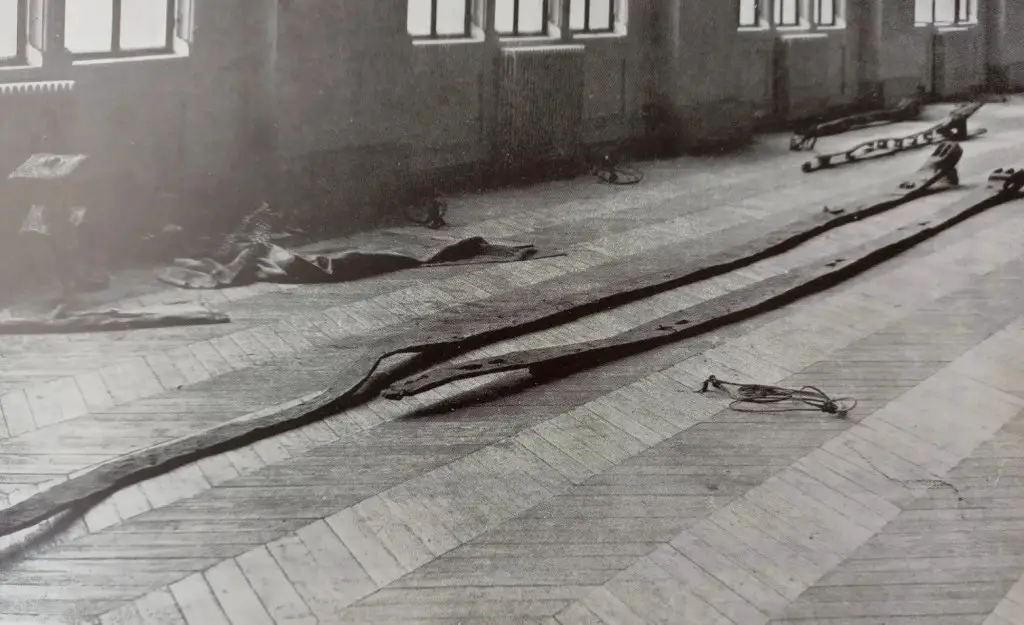
The masks are made in each village and for each Sigui, to then be kept in the sacred cave of the masks, together with those of the previous Sigui, serving as an historical archive of the ceremony. In passing and therefore incidentally we recall that Leo Frobenius had indicated the morphology of the cave, as homology of the same cosmic cave, a relevant indication that reconnects the Dogon ritual to the universal one in consideration of the care with which the same Dogon, and neighboring peoples, depict the ecliptic and territorially mark the observation points of the equinoxes and solstices.
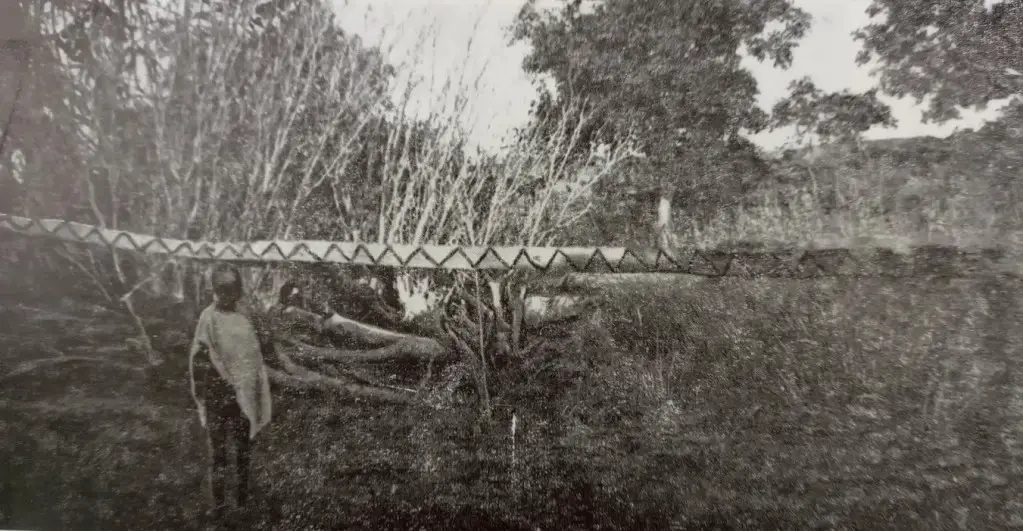
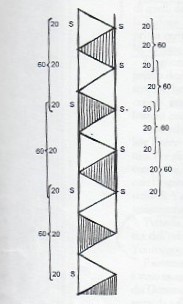
The subsequent translated, summarized and adapted descriptions summarize the very concise explanations on the ritual offered by the director to the interviewer, the interviewee starting out with these words: "So we began to explore hypotheses around the ritual value of the first six sigi which, as mentioned, are linked to the aforementioned locations”, from which the synopsis of the interviewee follows:
- The First Sigui it is the fall of the anvil, it is the death of the first elder, it is the immediate ritual that follows death. It's like in the crag cemetery.
- The second Sigui: it is celebrated with the dance on the village square with the mask that is not yet painted, it is the dance of the funeral of the Tyogou dancers.
- The third Sigui:the masks are painted erect, it is the Lady. The manufacture of the masks identical to those that are made every five years Nel lady the elderly are represented by means of the masks as they were that day from the big one mask- serpente who represented the first dead ancestor whose spiritual principles are collected in the great mask so as not to scatter them dangerously.
In the fourth year of Sigui, the Word is celebrated, the dance of the snake represents procreation, the beginning of a life cycle, the germinal debut of a new generation.
The fifth year of the Sigui, having completed all the rites that follow death, it marks the resumption of the life cycle: birth. To simulate the event, a pantomime is performed in a specific strip of land which offers precise morphological characteristics since it is sandy. This allows the "actants" to immerse themselves in the dunes and to emerge from them as from a placenta. After this the symbolic newborns go to wash and dance: the new generation is finally born. The presence of dance, as a substantial expression of the rite and of the music that accompanies it, is an absolute priority since, as Marius Schneider maintained, the central event of the rite is acoustic.
In the sixth Sigui everyone is dressed in female clothes, it is the "mothering" and for this reason the "new born" is in the arms of the mother who looks after him.
In the seventh year a Sanga takes place the sexual mutilation which makes infants definitively delivered to their external sex with the physical elimination of any admixture.
Rouch will not be able to film this part of the sigui in this circumstance (he will do it elsewhere) since the locality of Songo (the one pregnant with rock paintings, another essential chapter of the Dogon cosmovision which is not dealt with here) was already strongly Islamized in the 70s with relative prohibition of pagan ceremonies, also in the previous follow, of 1910, the natives had difficulty completing the rite.
Precisely this passage, as cruel as it is essential, for a development in conformity with the tradition of society, as understood by the Dogon, in which males lose their parcel of external femininity with the ablation of the foreskin and girls who lose their masculinity for the excision of the clitoris, it appears mysteriously linked to the orbital moments of the invisible stars of the Syrian system. Thus the archaic nature of the stellar conception and the inextricable network connection that binds every aspect of reality are reaffirmed.
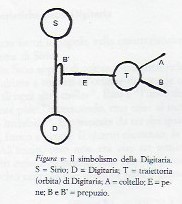

With that the cycle ended, the snake bit its own tail and it will be necessary to wait for the expiry of the following 60 years to renew the world and give it a new vital impulse.
Having said this, we can penetrate more deeply into the pulp of our argument which is constituted by the relationship existing between the Dogon and the star Sirius which, as the couple de Santillana/Dechend teaches us, constituted the immovable pivot of archaic becoming. In Dogon thought, it accompanies the knowledge of a mysterious star, orbital companion of Sirius, which is absolutely invisible to the naked eye, a white dwarf made up of very heavy matter, notions that are scientifically correct but evidently completely out of reach of Dogon "primitives". This "little" star constitutes the essential element of the creative process since it is precisely the fact of being tiny and composed of immensely compressed matter, which makes it so mythically attractive. It, to put it Pythagorically (geometrically and mathematically), is the "point" and is the "one", the principle of all things, the "seed" which possesses in nuce the whole. From a point, infinitely compressed, time and space will be generated, expanding in it all the content that, from the latent state of power. it will manifest itself in action: in synthesis from this cosmic seed all reality will spring through a grandiose and complex process of universal arrangement, impossible to synthesize in the circumstances.
Sirius B (this is the scientific name of the star) is therefore homologous to the fonio grain (digital exiles) origin of all the seeds (which are each linked to a planet in a singular astral conception) which, in it, are as it were contracted, just as the equally tiny egg of the clarias senegalensis, the torpedo fish (a fish, "almost" amphibious, which has received particular attention in the ethnological studies of this people due to its symbolic importance), which in the aquatic world assumes characteristics parallel to the digital, being considered the smallest among the eggs. Furthermore, for the Dogon Sirius is a star system formed not by two but by three stars (Sirius C is compared to the seed female sorghum) which will require some brief annotation later.
Regardless of this singularity, the Dogon conception appears conceptually superimposable on the testimonies offered in the Mill of Hamlet about the immobility of Sirius, seen just previously. It is through its fixity in the sky that the stability of the cosmos is at stake, and therefore of the world, insofar as it as "axis of the whole world“. The dense Star is reputed “like the egg of the World, …the source of all things” (M.Griaule, G. Dieterlen:1965; pp. 473, 474). "Axis of the world" and "source of all things" are attributes which, in religious historical language, confer an incomparable majesty on the subject to whom they are attributed. In various words according to the Dogon, it would be Sirius B which would make Sirius A stable and fix it in the sky and with it the whole universe.

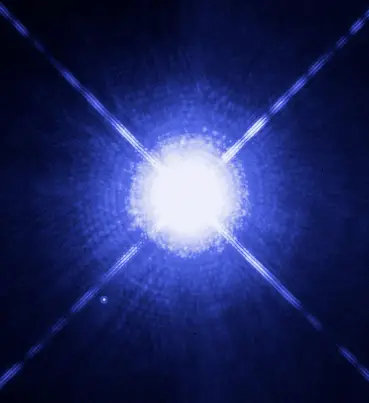
From the cosmic seed the cosmic egg will be generated by expansion from which all creation/manifestation will explode, a concept present in many cultures which makes it impossible to make a comparative comparison, even if summary, as it goes beyond the limits of this writing; despite this, we cannot fail to highlight how a more correct translation of the Genesis passage relating to the theme states "the spirit of God brooded the waters”. We take the liberty of observing, taking a small strategic step backwards, that none of the researchers has drawn a parallel between this seed and the evangelical story of the mustard seed, which is the fact that most interests us to detect in a "traditional" function, and the step is this:
"The kingdom of heaven can be compared to a mustard seed, which a man takes and sows in his field. It is the smallest of all seeds, but when it has grown it is larger than other legumes and becomes a tree, so that the birds of the air come and nest in its branches."
Matthew 13, 31-2
Likewise, no one has proposed a comparison with Hinduism in which the similitude of this conception - the smaller the greater - is rendered unequivocally in these words:
"This atma, the divine spirit residing in the heart, is smaller than a grain of rice, smaller than a grain of barley, smaller than a grain of mustard, smaller than a grain of millet, smaller than the germ. than a grain of millet, this atma residing in the heart is even bigger than the earth, bigger than the atmosphere, bigger than the sky, bigger than all the whole worlds.. "
Chândogya Upanishad, 3rd Prapâthaka, 14th Khanda, shruti 3
The heliacal rising of Sirius
The theme of the heliacal rising of Sirius is contained in two passages of the founding myth where the two ethnologists dwelt, as we read in this passage: "Among the other terms noted by Griaule-Dieterlen there is also the association of Sirius and the Sun in the creation of the Dogon world which reports: 'The men who had seen 'sigi tolo' (Sirius) shining throughout the descent (and at the moment of impact) then witnessed the first dawn which broke in the east and illuminated the universe from that moment'” (M. Griaule, G. Dieterlen:1965, p. 444).
Another passage introduces the theme of the descent of the Ark containing all existing creatures, represented by their symbols, so that each being will be the theophanic equivalent of a celestial creature. At that point it happened that: “After the Nommo, all the beings who were on the ark descended to Earth in turn. When it was emptied (of its contents) Amma lifted the chain holding it to the sky and then "closed" the sky. The Sun, as described in this passage, is directly associated with Sirius because “…he sealed it and the sun went down in the middle of the night, he sealed it he pointed the way, then the sun rose“ (M. Griaule, G. Dieterlen: 1965, 461).
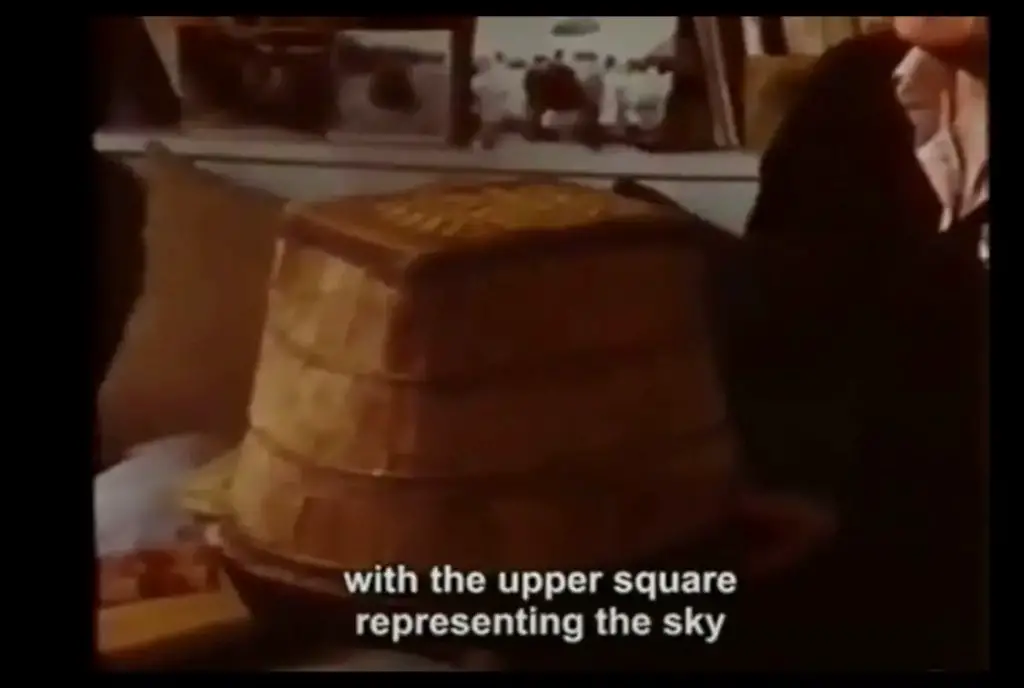

Great is therefore the importance of this event in Dogon history. Hence the possibility that it received punctual cult attention, as indeed happened for other segments of the gigantic myth. Precisely for this reason we draw attention to an article published by Marcel Griaule himself in 1957 - therefore posthumously to his departure in 1956, and evidently matured after the "revolutionary" article A Sudanese system of Sirius – by Title Symbolisme d'un temple totemique soudanais (ISMEO): it is an excerpt from a significant collection on the architectural theme in the religious field entitled Cosmic symbolism of religious monuments. Undoubtedly complex article but of exceptional content, in which various themes of the local indigenous culture are addressed, all concerned from a cosmological point of view and, specifically, we enucleate that essential essence that may interest readers of a speech like this, which was drafted especially in relation to the astronomical theme of the Sirian system and the heliacal rising of the main star.
It is good to premise (or at least recall) the fact that western Sudanese cosmogony in general seems to constantly resolve itself into a cosmology expressed in a "vernacular", albeit mythical language, and should be interpreted in this perspective. Having said that, we would like to highlight how the Dogon cult has given great importance to this cosmogony performed in the auroral moment of creation which seems to integrally found daily reality, by building observatory-sanctuaries through which to scrutinize this heliacal rising (a phenomenon which only occurs for one day a year) through two specially made holes in these modest temple structures.
These are mostly rather archaic temples present in places that are often now abandoned for various reasons which well document the archaic nature of Sotiac observation among these populations. to p. 34 of the cited article the author tells of his visit to an apparently abandoned village in the XNUMXth century with the very short name "I" and where, among the many finds, there is a sanctuary whose morphology testifies to the goodness of astronomical optics chosen for the present purposes of exposition. Griaule writes: “The sanctuary built in the cave offers the interest of representing, in the eyes of the Dogon, la symbolic replica of what existed in the Mandé country whose theoretical architecture and destination they knew”. Very relevant consideration as it testifies to the presence of a certain perpetuity of religious architecture and its astral purpose that goes well back in time, or before at least the fourteenth century. A.D
Griaule continues in the description of the building characteristics of the sanctuary by introducing, just afterwards, this extremely relevant reflection: "Above the door looking east are placed two round openings one handbreadth in diameter, the distance between the center of the first circle and the second one cubit, they are the holes of the sanctuary to see the Sun and Sirius through the two eyes, the hole on the right is the "seat" of Sirius“, the left hole that of the Sun“ (p. 36, text slightly reworked in translation). It is good to recall the fact that the simultaneous rising of the two stars on the horizon is an astronomically peculiar phenomenon which takes place in precise calendar circumstances depending on the latitude of the place and the day of the year.

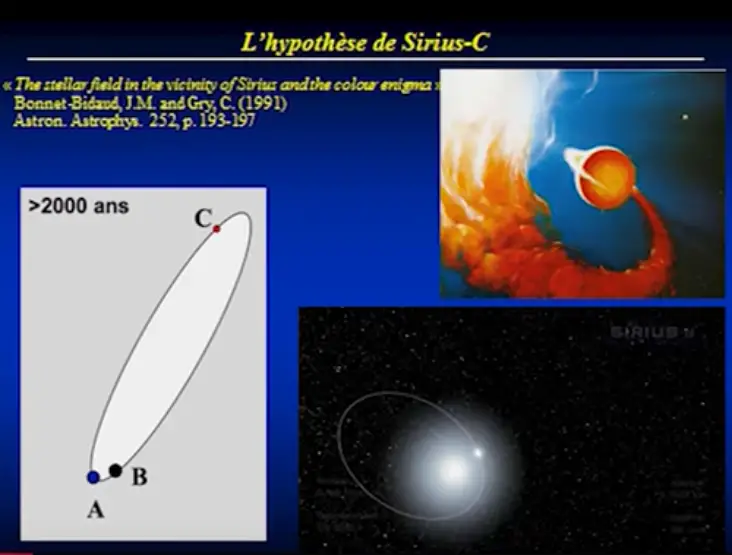
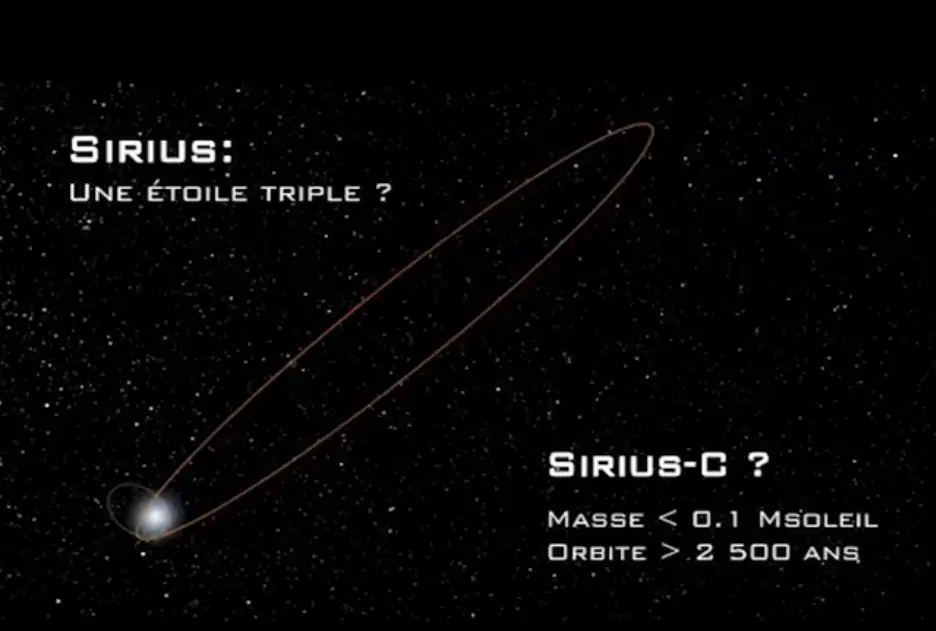
However, even if this is not insignificant in relation to the skepticism of many, leaving out other important but non-essential observations that provide a picture of enormous symbolic complexity, it is appropriate to focus attention on that extraordinary image contained in the text of the ethnologist and registered as No. 4. Griaule prefaces his comment on the image with the fact that the heliacal observations were made, during his stay, limited to the competent "priests" of the Arou tribe, and this took place in the "mythical" locality of Yougo (the one from where the sigui). However, in sanctuaries or "ginna" (totem houses) in other regions, images of the meeting of Sirius with the Sun were made. One of these, obtained with a mixture of black rice, constitutes a document that could truly be defined Out of Place Artifacts. It is a figure that is reproduced here and that Griaule comments as follows:
"The drawing on the east side of the sanctuary of the meeting of the Sun with Sirius. The sun is sized in a circle approximately 20 in diameter cm. He is represented with four cross rays, on the right there is a similar figure, twice smaller, representing Sirius. Between the two and closer to the second, a point marks the position of the star Digitaria (Sirius B); further down a second dot, slightly thicker, represents the female sorghum star. These two stars are part of the Sirius system. "
[see below: The system of Sirius and the rites connected to it]
In detail it should be noted that, although for the Dogon the Sun and Sirius are stars of the same size, the pictorial disproportion derives from the importance given to the Sun for its task of maintaining life on earth, and likewise the difference highlights the reality of visual observation. Having said this, it can only be astonishing that, prior to the visit of any alleged astronomer missionary hypothesized by some skeptical scholars, the presence of the mythology of the two invisible stars was deeply operationally incorporated into the complex Dogon culture.

The stellar topic was revived recently, using the testimonials contained in Pale fox, by the astrophysicist JM Bonnet-Bidaud, who, as a historian as well as astrophysicist, went on a mission with Dieterlen to the Dogon country in 1998 (the energetic ethnologist was 95 years old and still found the strength and tenacity to defend the controversial article written in 1950!), to carry out some astronomical surveys in Sanga, a mythically very significant place where there is a gigantic "observatory" (all this will be discussed later).
The widely disseminated results of his observations confirm that, unequivocally, the Dogon had been dedicating themselves to heliacal observation in this locality since very remote times (therefore the presence of Sirius is by no means secondary in their culture) and likewise it should be noted that the megalithic complex of Sanga is, in some way, to be considered a "secondary" center (to quote Guénon) in relation to the descent of the ark, together with that of the dwelling-sanctuary of the great Hogon of Arou (seen previously), since the main center of this event is located on Mount Gurao overlooking Lake Debo. In truth, here we are not exactly facing a lake as this lake surface is, more than anything else, an immense floodplain area (internal delta of the Niger river) which governs the flooding of the Niger and which lends itself well to the imagination symbolic - and this in parallel with other traditions - to represent that primordial hill where the events of the primordial occurred and, if you want and even more, the retreat of the flood waters in the biblical story.


The system of Sirius and the rites connected to it
We have now come to speak more carefully of the system of Sirius, which was mentioned in the previous pages, in relation to the astonishing drawing made with millet mush in a sanctuary which was subsequently abandoned. It is a very important document which confirms what the two ethnologists had previously claimed. As anticipated, in 1950 it was released for the Journal des Africanistes, evidently sectoral publication, an article written by Marcel Griaule and Germaine Dieterlen with the title A Sudanese System of Sirius (Un Systeme soudanais de Sirius, T. XX 1950 pp. 273-294). Shocking article for its contents, despite the absolute calmness of the scientific exposition, because it assumed that the Dogon, in addition to having knowledge of the satellites of Jupiter and the rings of Saturn, whose images will be published in pale fox, were even well informed about the Syrian system and its peculiar orbital characteristics.
Naturally the two editors were very well aware of the extraordinary nature of the news they were reporting, as the Syrian system was absolutely invisible to the human eye under any observational condition, and for this reason, at the beginning of the same article, they presented their qfour qualified informants, or of the native priests, coming from different localities and even speaking different languages (exactly three speaking sanga and one of language wazouba) who detailed the interlocutors in every detail of the very delicate topic.
After this premise it should be clear to anyone how the system of Sirius, despite its invisibility, has penetrated so deeply and capillarily into every Dogon institution (for example in the fundamental rites of circumcision and excision) as to make it impossible to hypothesize a simple contamination epidermal. Despite all evidence, the two were vehemently attacked by other specialists in the belief that they had indulged in fantasy. In the following pages he will refer, albeit briefly, to the presence in the depths of the Dogon culture of further connections with the stellar world and its motions, whose knowledge and, above all, whose interpretation involves not only this ethnic group, but also related peoples. neighbors. In fact, at the end of the same article, Dieterlen and Griaule declare that such knowledge is shared with the Bozos: "The Syrian system is also known by the Bozos, who defined Sirius sima kayne ("sitting pants") and its satellite bad tone ("eye star")”. Similarly, in the first note of the same article, the two authors write: "A member of the Bambara tribe living in Bandiagara also confirmed the most important features of the system. The widespread knowledge of the Sirius system is therefore confirmed".
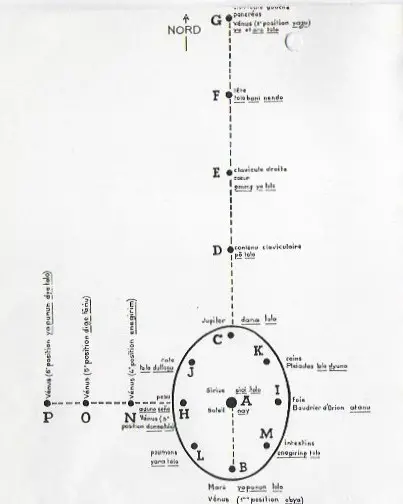
Dieterlen and Egypt
Considering the established links between the Egyptian conceptions and those of the Dogon, it is legitimate to ask: if they learned and/or shared the phenomenon of the heliacal rising assuming a religious meaning anyway. Knowledge of fellow Syrian stars should likewise be found. As the Pan-Africanist researcher Cheikh Anta Diop has emphasised, with great emphasis, knowledge of ancient Egypt certainly spread throughout Africa - and some argue that this happened, as far as the Dogon are concerned, thanks to the pulverization of the Libyan kingdom of the Garamantes, in turn tributaries of the wisdom of the Egyptians - thanks to the presence of easier communication routes in the past, due to a less desert climate. It is therefore very possible that this astronomical tradition was thus transmitted to the Dogon, constituting the framework which gave rise to the myth of the po-tolo. Unfortunately, we are here in the field of hypothetical speculation for which it will be very difficult to provide proof, which however does not invalidate the objective enigmatic nature of the facts. Non-secondary clues take us back to Egypt and find their source in Schwaller de Lubicz's statements on the Sothian system:
"The double star of Sirius - which plays in Pharaonic Egypt the role of a central sun for our entire system - suggests to us today the existence of an atomic cosmic system having as its nucleus this "Great Procurement" which is the ancient Sothis but at this point it is possible that in a not too distant time the revision of our entire cosmology will become necessary. "
Pushing us into further comparisons with Egyptian culture, in search of the even more elusive Sirius C, albeit with all the caution due to the circumstance, we should consider the hypothesis that the three stars forming the system can find correspondence in the three Egyptian goddesses Isis (Sothis ), Anukis, and Satis or Satet, and this following the “Syrian” observations of a well-known historian of ancient Astronomy, Otto Eduard Neugebauer. We propose here a passage reported by M. Hope, author of Ancient Egypt: The Sirius Connection, where you can read: “Goddess Satis and companion Anukis, cannot be considered as a separate constellation, but as associated with Sothis” (M. Hope, 1996, p.107 of the Italian ed.). Prudently adding to this relief is the fact that Anukis and Satis, the wives of Khnum, were often portrayed with Sothis, traveling on the same celestial boat, which could further attest to the complementarity of the system.
From this it is possible to hypothesize that the many "out of place" quotations present in the Koran, i.e. not congruent with the times, do not necessarily derive from the divine inspiration of the Prophet's quill, as men of faith claim, but have nonetheless been part of a deposit wisdom circulating at least in the Middle East. As regards specifically the Syrian system (limiting ourselves to Sirius B) the proof of this would be contained exactly in Sura LIII (The star) of the sacred text, in which there are two particularly intriguing verses on the subject. The first to be noted is number 49 and is contained in the paragraph God the beginning and end of everything, where in the text it reads and he is the lord of Sirius. TThis affirmation, according to the (Islamic) interpreter, should be placed in relation with verse 9 of the same sura, which contains a singular explanation of the orbital motion of the satellite star of Sirius, whose relationship with the main star would be documented by this “enigmatic” locution up to two bowshots and even less.
Such an incomprehensible expression would only become fully intelligible today, being able to observe the stellar motions of that distant system. In fact, Sirius B assumes a sinuous motion in its path, like the waves of an oscilloscope, while it orbits around the main star, and the duration necessary for it to complete its revolution is exactly calculated in 49,9 years. This would seem to coincide exactly with the expression up to two bowshots and even less. If this were the case, because this is the comment, we reiterate it, proposed by the Islamic source, this pre-knowledge of the Sothic system would represent a fact well shared by archaic and contemporary pre-scientific cultures, a fact on which one cannot but wonder (source: L'étoile Sirius – Les miracles du Coran – ISLAM, https://www.youtube.com/watch?v=2VzFPPdFRmQ).
Other astronomical themes
The "therapeutic" obstinacy of the scientists towards Griaule and Dieterlen has made the critics forget the existence of other conspicuous local astronomical observations which are well documented by unsuspected sources, from which some drawings have been obtained which have been used in the Mill of Hamlet as proof of their peculiarity and that we will find ourselves reproducing here again.
In this circumstance we are referring to two articles which appeared in 1950 and 1951 in the London edition of the magazine Africa. The author of the first is the ethnologist Dominque (Dimitri) Zahan, a perspicuous researcher, together with Dieterlen (defined by Rouch as an "inspired pythoness"), among the Bambara, a people neighboring the Dogon. The second article is equally by Zahan for its first part, while the second, always of a cosmological nature, carries a brief but very dense contribution by Solange de Ganay, a noblewoman attracted by ethnological studies who frequented Africa for many years, participating missions of Griaule and Dieterlen, then publishing his relevant results in numerous articles that still appear perfectly current. The first contribution bears the title A Sudanese gnomon and the second, which is of greater interest in the circumstance and which is in any case linked to the first, concerns the notion of the ecliptic shared between the Dogon and the Bambara.
Let's start by saying that the gnomon, in the shape of a granary, is mainly used to determine the date of the solstices and equinoxes, thus providing a calendar which has obvious sacred aspects which are obviously not limited to the utility of agricultural operations. From the gnomon, which is a measurer of the course of the Sun, we pass by translation to the ecliptic which mainly interests us here; consequently, of the interpretative proposal offered by Zahan, some essential passages will be cited, aimed at showing the complexity of the indigenous astronomical system and therefore of the related cosmogony (which is a cosmology expressed in other words) which is always closely related to the ritual apparatus .
As mentioned, the Bambara share with the Dogon the same ability to give prominence to the ecliptic, which would testify to a certain possible commonality of origin between the two ethnic groups or, in any case, the archaic sharing of a common knowledge. To document these commonalities and affinities, Zahan has proposed some cosmological schemes taken from the iconography of the Dogon and one of these, which represents the Egg of the world, has been commented with great and just "emphasis". in Hamlet's Mill because it provides the two authors with an essential motivational contribution. Here, part of the commentary and the drawing are drawn.

In Zahan's contribution, the pivotal passage for us is the one in which he deals with the report of a celebration of the renewal of the year at the bambara, the rite komo, punctuated by the movement of the sun across the sky, establishing an intriguing relationship heralding many developments: “We leave it to linguists to determine the semantic value of the phoneme 'sa', snake, and 'sa' year, ma constant is the typical representation of the komo with a snake, both cut and painted, and unquestionably always related to the Bambaras with the annual movement of the sun and with the cycle of the precession of the equinoxes”. a locution, precession of the equinoxes, thrown there with nonchalantly but which takes the form of a statement of extraordinary importance as it testifies to the presence of the precessional theme also among these "primitive" Sudanese peoples and which, as we will see shortly after, is attested iconographically.
Also in this circumstance Egypt is the most accredited reference culture, as in it the presence of the knowledge of the precessional rhythmic and its application would be clearly found, as well suggested by Schwaller de Lubicz in his texts on 'Pharaonic Egypt speaking of the zodiacal scrolling of the constellations at the vernal point to which a change of the symbols of the pharaonic kingship is correlated, thus expressing the will to make the earth the mirror of heaven.
After this baggage of information, the possibility of giving an account of the sixty-year cycle of Sigui is finally introduced through some explanatory passages. We have just seen that "snake" and "year" coincide in the Bambara culture, while, previously, we encountered a singular artefact, the great mask of the follow, depicting the primordial serpent in whose long wooden body scales designed in the shape of a "sawtooth" are represented. These apparent "decorations" are instead the notches of a calendar marked by twenty-year periods. At this point we take a further step to link these computations to the celestial motions, distinguishing the cycles in which we have come across, in order to grasp a complete and synoptic vision of the cosmological periods of the ethnic group.
Il sixty-year cycle it concerns the follow, rite of cosmic renewal, spiritual engine in which generations flow among themselves, the dead finally become ancestors, while a new age group is circumcised assuming, through the definitive fixation of their sexuality, a qualified and stable role in Dogon society ( is the serpent biting its own tail). The fifty years reckoning instead it is linked to the rotation of Sirius B around Sirius, and therefore does not coincide with the Sigui, a (grave) error in which Monserrat Palau Marti fell in his book Les Dogons Part 1957. Il thirty-year cycle is intermediate and it is indicated only by Leiris in his book dedicated to the secret language, an observation based on the documentation collected by Desplagnes in his exploration and which has to do with a celestial photic signal which marks the moment in which it is necessary to proceed re-establishment ofaxis beat dangerously shaky. Of which we have an intriguing parallel with the re-establishment of the vertebral column of Osiris in Pharaonic Egypt in a rite, in fact, every thirty years.
Il twenty-year count is quite possible through the visual observation of the conjunction Jupiter - Saturn, on which Kepler built his amazing circle diagram (almost like a snake biting its own tail, according to Rouch's affirmation), which sees the two stars join in the night sky and therefore they too mostly shine in the same sign of the ecliptic-ouroboros three times, every twenty years (3×20:60). It is precisely through this system that the precession can be taken into account, as shown in the drawings attached to this text. It is not known if even here some astronomer missionary (perhaps the same), true Deus Ex Machina, particularly knowledgeable on the subject, intervened to instruct these "primitives" on such details which, in any case, certainly constitute hypotheses. Beyond this, what is objectively revealed is the constantly cosmological nature of the events, invariably connected to an increase in stellar luminosity and to the reflections that these changes produce on the Earth.


The second part of the long astronomical article, which we will only briefly mention, is, as mentioned, entrusted to the pen of Solange de Ganay and bears a very intriguing title Graphs of a mythical journey near the Bambara. We quote the article, both because this title constitutes the umpteenth confirmation that all mythical journeys are resolved in the end in an astral "adventure", and, correlatively, for a fundamental design also taken up again with the same right emphasis in the Mill of Hamlet and which is re-proposed here, having as its source the aforementioned writing by Ganay. It exactly represents the conical vortex of the precession, the indisputable seal of the profound and certainly enigmatic knowledge of these distant peoples, legitimate candidates for the inheritance of the Primordial Tradition.
Finally
Anyone who has recently visited the Dogon could only see how the living conditions of this ethnic group were quite miserable and bordering on subsistence. The disappearance of game and stunted agriculture and very uncertain harvests are certainly not the conditions for making the material life of a people at least passable. The only extra resource, which makes up for the scarce variety of food, is produced by the introduction of the plantation of onions, which the Dogon, as excellent farmers, have learned to cultivate well in order to export the product and have done all this so well to be known around as "the onion people", with all due respect to Sirius B and other bells and whistles.
However, what stands out, observing the stones and the altars encrusted with millet and blood mush, is the intensity of the sacrifices that are made every day and which are essentially addressed to the "Invisibles" to favor their benevolence and therefore to ward off "hunger". , soliciting fertility, survival being substantially linked to the abundance and regularity of the rains and, subordinately, to Western charity. This would superficially suggest that the Dogon religion can be labeled under the horrid expression of natural religion. The small effort of this paper was to highlight the opposite, that is, how the metaphysical reading of the local religion made by Griaule and his followers was correct (and therefore if metaphysics certainly cannot be "natural"), and that this religion it has roots in the "word", in the "verb" of the myth which carries stratified hermeneutics which make it profoundly esoteric.
Equally complex is the "ethnic Christology" founded on the self-sacrifice of the seventh Nommo, who also died knowingly to save men and then "resurrected" and who communicates the Word with his own moist tongue every night by licking the body of his earthly vicar ( the Hogon). All of this therefore deserves the utmost consideration, perceiving, beyond the pervasive immanent dimension, the main purpose of the Dogon ritual, which draws its source from a so-to-speak "Pauline" conception of the human being whose body is sown in the rupestrian necropolises to then rise again in the subtle world (Corbin would probably say in commentary imagine them), realm of the Ancestors, destination which constitutes the absolute existential/soteriological aspiration. The Dogon individual is not simply "body and soul" but a coagulation of universal forces, each recipient of complex rites of detachment. Marcel Griaule presented the aforementioned Dogon soteriology with this incisive passage:
"These men who minded their occupations like all the others, who ranted in the market about overpriced meat and toiled in the fields, were dead, they drank for the dead. They came alive only later when they were promoted to the rank of ancestors, when their bodies were dried up in the necropolis".
TEXTS, ARTICLES AND FILMS ABOUT DOGON
Texts
Giacomo Albano: Sacred astronomy. The millennial cycles of the stars and the great stages of human history and spirituality, Youcaprint, Lecce, 2000
Marco Aime: Dogon Diary, Bollati Boringhieri, Turin 2000
Antonio Bonifacio: Masks and souls towards the stars, Venexia, Rome 2018
Antonio Bonifacio: Journey to the end of time (novel "Dogon"), The caravel, Capranica (VT) 2020
Germaine Dieterlen: Les ames del dogon, Edition Anté Matièrie, sl 1941
Germaine Dieterlen Les Dogon, L'Harmattan, Paris, 1999
Ferdinando Fagnola: Journey to Bandiagara, Officina Libraria, Milan 2015
Geneviene Calame Griaule: The world of the word, Boringhieri, Turin 1982
Marcel Griaule: God of water Bompiani, Milan 1968
Marcel Griaule; Masques Dogon Istitut d'Ethnologie, Muséé de L'homme – Paris 1994
Marcel Griaule Germaine Dieterlen: Le Renard Pale, Institut d'Etnologie, Paris 1965
Muttay Hope: the secret of Sirius, Corbaccio, Milan 1996
Schwaller de Lubicz: The pharaonic theocracy, Mediterranee, Rome, 1994
Schwaller de Lubicz: The sacred science of the pharaohs, Mediterranee, Rome 1994
Michel Leiris: The langue secrete de Dogon de Sanga, Institut d'etnologie, Paris 1948
Michel Leiris; Phantom Africa, Quodlibet Humboldt, Macerata 2020
Ferdinando Fagnola: Journey to Bandiagara, L'Officina Libraria, Milan 2015
Giorgio de Santilllana, Hertha Von Dechend: Hamlet's mill, Adelphi, Milan 1983
Giorgio de Santilllana, Hertha Von Dechend: Sirio, Adelphi, Milan 2020
Robert Temple: the mystery of Sirius, Piemme, Casale Monferrato 2001
Articles
Antonio Bonifacio; The cross, the skull, the mask. The doctrine of Dogon foundation and orientation and its parallels with other traditions https://www.simmetriainstitute.com/it/articoli/articoli-per-autore.html
Jean Marco Bonnet Bidaud: La découverte d'un observatoire Dogon,in « L'astronomie Afrique », digital magazine. https://lastronomieafrique.com/la-decouverte-dun-observatoire-dogon/
Germaine Dieterlen: Contribution to l'Etude des fogeron en Afrique, Ecole pratiques des Hautes Études, Section de Sciences religieuses, tome 73 (1964)
Marcel Griaule, Germaine Dieterlen: A systeme soudanais de Sirius, «Journal des Africanistes », XX (1950 )
Marcel Griaule: Symbolisme d'un Temple totemique soudanis, ISMEO, Rome, 1957
Solange de Ganay; Studies on the cosmology of the Dogon and the Bambara of Sudan Français, II, Graphes de voyage mythique chez les bambaras, "Africa", London, 1951
Dominique Zahan: A Sudanese Gnomon, "Africa", London, 1950
Dominique Zahan: Studies on the cosmology of the Dogon and the Bambara of Sudan Français, THEa notion d'escliptique chez les dogon and les bambara, "Africa", London, 1951
Movie
Jean Rouch: Sigui Synthese (1967-1973), https://www.youtube.com/watch?v=EJ7bDis6ddE
SIRIUS, L'ÉTOILE DOGON (Conference part. 2), https://www.youtube.com/watch?v=ThfC9vkN_p4
The Mystery of the Dogon, https://www.youtube.com/watch?v=Emz0siJkiDg)
“Sirius, the Dogon étoile” (CNRS 1999), https://images.cnrs.fr/video/887
Enquête sur Sirius, l'étoile mystérieuse, https://www.youtube.com/watch?v=MEBvFk6noJA
Luc de Heusch – Sur les traces du renard pâle (Researches en pays Dogon, 1931-1983), https://www.youtube.com/watch?v=ocJb13LeG3M
Lever de Sirius, https://www.youtube.com/watch?v=bOm1PtXqSs0 (where the exact proportion of Sirius and the Sun and the dimensions of Sirius B are reported)
Vision africaine du ciel, par Jean Marc Bonnet Bidaud, chercheur à L'Irfu du CEA Saclay, https://www.youtube.com/watch?v=YYVrw8Cm42w
L'étoile Sirius — Les miracles du Coran – ISLAM, https://www.youtube.com/watch?v=Emz0siJkiDg
